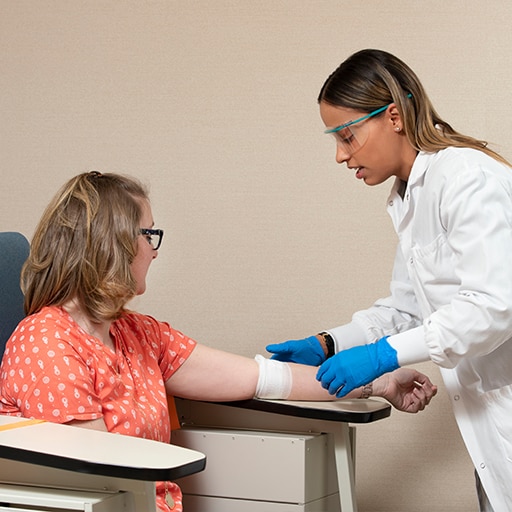Indicators on Northeast Medical Institute - New Haven Campus Phlebotomy Course & Cna Class You Need To Know
Indicators on Northeast Medical Institute - New Haven Campus Phlebotomy Course & Cna Class You Need To Know
Blog Article
The smart Trick of Northeast Medical Institute - New Haven Campus Phlebotomy Course & Cna Class That Nobody is Talking About
Table of ContentsHow Northeast Medical Institute - New Haven Campus Phlebotomy Course & Cna Class can Save You Time, Stress, and Money.Everything about Northeast Medical Institute - New Haven Campus Phlebotomy Course & Cna ClassThe Buzz on Northeast Medical Institute - New Haven Campus Phlebotomy Course & Cna ClassFacts About Northeast Medical Institute - New Haven Campus Phlebotomy Course & Cna Class UncoveredGetting The Northeast Medical Institute - New Haven Campus Phlebotomy Course & Cna Class To WorkThe Of Northeast Medical Institute - New Haven Campus Phlebotomy Course & Cna Class
The use of such devices should be accompanied by various other infection prevention and control practices, and training in their usage.For settings with reduced sources, cost is a motoring aspect in purchase of safety-engineered devices - PCT Training. Where safety-engineered tools are not available, competent use a needle and syringe is acceptable. Unintentional direct exposure and particular details about an incident should be taped in a register. Support solutions should be advertised for those who go through unintended direct exposure.
labelling); transport conditions; analysis of outcomes for scientific administration. In an outpatient department or clinic, offer a committed phlebotomy workstation containing: a clean surface with two chairs (one for the phlebotomist and the other for the client); a hand wash basin with soap, running water and paper towels; alcohol hand rub. In the blood-sampling room for an outpatient division or facility, offer a comfy reclining couch with an arm rest.
Not known Factual Statements About Northeast Medical Institute - New Haven Campus Phlebotomy Course & Cna Class
Ensure that the indicators for blood tasting are plainly specified, either in a written protocol or in documented directions (e.g. in a lab kind). Accumulate all the devices needed for the procedure and location it within risk-free and very easy reach on a tray or trolley, making certain that all the items are plainly visible.
Where the individual is grown-up and aware, follow the steps described listed below. Present yourself to the person, and ask the person to state their full name. Check that the lab kind matches the patient's identification (i.e. match the patient's details with the lab type, to make certain accurate recognition). Ask whether the license has allergic reactions, fears or has actually ever passed out during previous injections or blood draws.
Make the person comfy in a supine position (when possible). Place a tidy paper or towel under the individual's arm. Go over the test to be executed (see Annex F) and get spoken authorization. The patient has a right to decline an examination any time before the blood sampling, so it is essential to make certain that the person has actually understood the treatment.
How Northeast Medical Institute - New Haven Campus Phlebotomy Course & Cna Class can Save You Time, Stress, and Money.
Extend the individual's arm and check the antecubital fossa or forearm. Situate a vein of an excellent dimension that is noticeable, straight and clear. The layout in Section 2.3, reveals usual positions of the vessels, however numerous variations are possible. The median cubital capillary exists in between muscle mass and is typically one of the most very easy to puncture.
DO NOT put the needle where blood vessels are drawing away, because this enhances the chance of a haematoma. The vein should be noticeable without using the tourniquet. Finding the blood vessel will certainly assist in establishing the right dimension of needle. Apply the tourniquet about 45 finger widths over the venepuncture website and re-examine the capillary.
Samplings from main lines bring a risk of contamination or wrong lab examination results. It is appropriate, but not perfect, to attract blood specimens when very first presenting an in-dwelling venous device, prior to connecting the cannula to the intravenous fluids.
The Main Principles Of Northeast Medical Institute - New Haven Campus Phlebotomy Course & Cna Class
Failing to allow enough get in touch with time enhances the risk of contamination. DO NOT touch the cleaned up site; in particular, DO NOT position a finger over the blood vessel to guide the shaft of the exposed needle.
Ask the patient to form a hand so the blood vessels are a lot more famous. Go into the capillary swiftly at a 30 degree angle or much less, and remain to introduce the needle along the blood vessel at the easiest angle of entry - Phlebotomy Training. Once sufficient blood has actually been gathered, release the tourniquet prior to withdrawing the needle
Facts About Northeast Medical Institute - New Haven Campus Phlebotomy Course & Cna Class Uncovered
Withdraw the needle gently and use gentle stress to the website with a clean gauze or completely dry cotton-wool sphere. Ask the client to hold the gauze or cotton woollen in place, with the arm prolonged and elevated. Ask the individual NOT to flex the arm, because doing so triggers a haematoma.

The Single Strategy To Use For Northeast Medical Institute - New Haven Campus Phlebotomy Course & Cna Class
Where feasible, keep the tubes in a rack and relocate the shelf in the direction of you - https://anotepad.com/notes/7i5cjp33. If the example tube does not have a rubber stopper, infuse extremely gradually right into the tube as lessening the stress and speed utilized to move the sampling lowers the danger of haemolysis.

Report this page